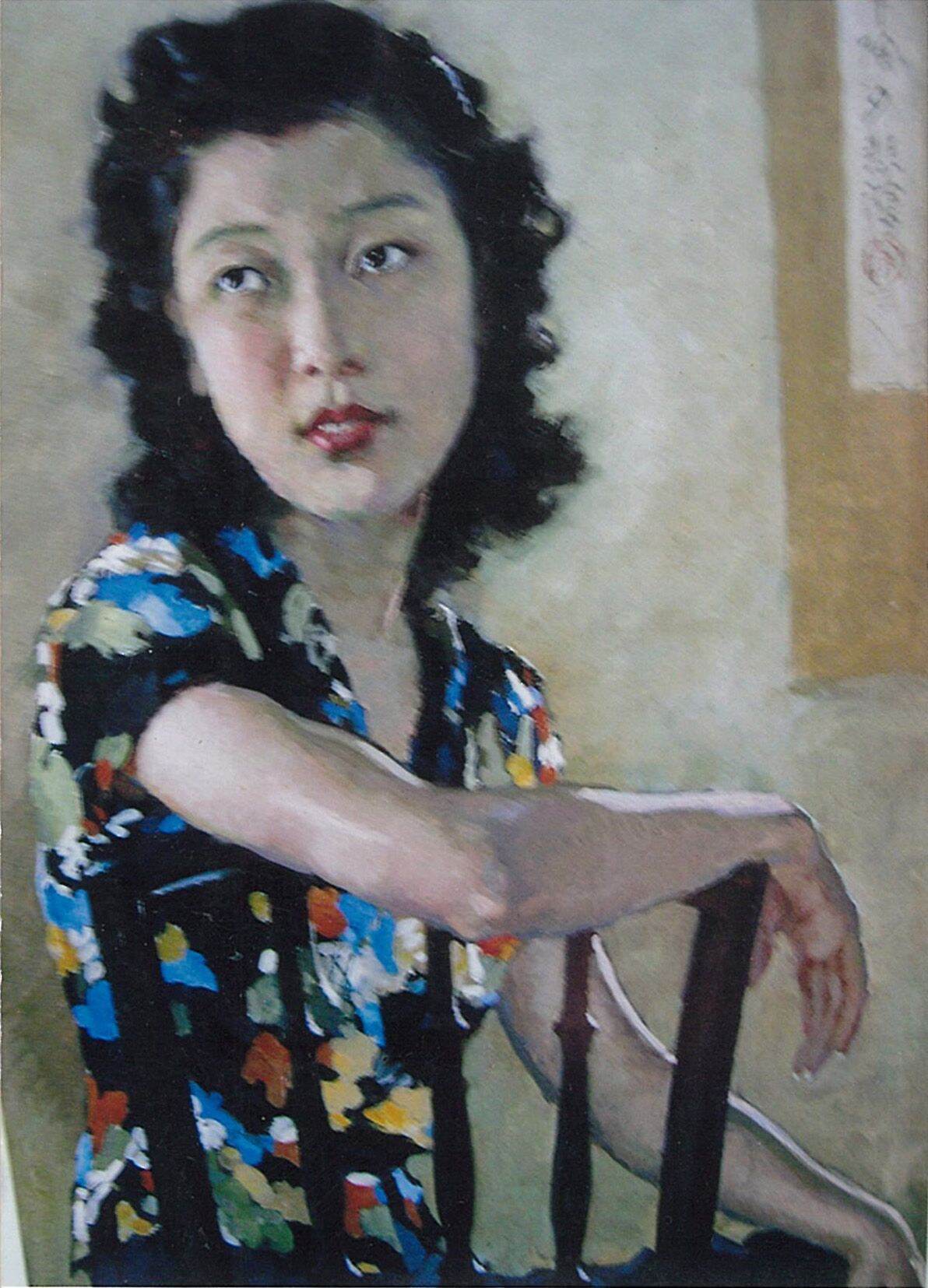李青萍的意义 The Meaning of Li Qingping
学术主持:皮道坚 ACADEMIC HOST: PI DAOJIAN
李青萍命途多舛,经历传奇,她的跌宕起伏的艺术人生不啻是中国现代艺术史的一个意味深长的隐喻,更是20世纪中叶以来中国社会政治、文化生活变迁的生动写照。从20世纪40年代初与刘海粟、司徒乔等人在南洋做联合巡展,被刘海粟赞誉为“引进西画之先驱”,也是徐悲鸿眼中的“新派女画家”;到50年代初坠入其人生的谷底,此后三十余年的轮番关押、监禁、改造、管制,即便不在囹圄之中也过着毫无尊严的非人生活;直到80年代初“风起于青萍(苹)之末”,中国社会的改革开放和思想界的“新启蒙”之风为年逾古稀的李青萍奇迹般地带来了艺术创作的春天,艺术家创作力的勃发到了令世人震撼的地步。当时正值中国现代艺术运动“85美术新潮”兴起之际,李青萍作品的现代气息、浪漫情怀及其任意纵心、自由泼洒的不羁风格给新一代的现代艺术追求者以极大的启迪和鼓舞,尤其是她矢志于艺术,身处逆境而百折不挠、无怨无悔的伟大精神激励着那场“新启蒙”运动中的无数年轻人。今天看来,这样一段五味杂陈、令人唏嘘的社会小人物和艺术家大人物的个人史,实在有着太多值得我们深思的意义。引发对这些意义的认真思考,无疑应该成为继1986年湖北美协在武汉古琴台为李青萍做的首次个展、2008年上海美术馆的《青萍残影——李青萍捐赠作品展》和2009年湖北美术馆的《青萍残影——李青萍艺术展》之后,本次展览的主要学术目标。
在消费主义文化已然渗透进我们社会生活方方面面的当下,对李青萍艺术与人生的回顾至少在两个层面上有着积极的现实意义,也就是说这样的回顾将从艺术和社会的层面同时提升我们对文化主体性的精神诉求。尽管对李青萍晚年的绘画艺术已有不少具体深入的研究,研究者往往将她与西方的诸多大师如高更、梵·高、劳特累克、诺尔德、郁特里罗乃至美国波普画家琼斯、抽象表现主义大师波洛克、德库宁等人相提并论,但除了艺术家早年对高更、梵·高艺术的心仪有迹可寻外,其他大师与李青萍晚年的艺术创作实际上并无关联。从李青萍的人生轨迹及其晚年的创作条件来看,她的绘画艺术皆是她的人生体验、生命感悟和炽热情感的随机迸发,在在都能让人感受到艺术家鲜活的主体性人格。这样的艺术表现所蕴含的在地性文化特色及其精神能量,是一个被长期忽视的话题,借助李青萍这一个案可以加强我们对这一问题的深入研究。从社会层面而言,对李青萍艺术与人生的回顾将同样引发我们对主体性概念思考,那就是人的自由和解放如何成为可能?在今天商业化和消费主义文化为主导的生存环境中个人主义的社会伦理与价值标准如何建构?这些我们都能在李青萍的艺术与人生中找到答案。
 1941年,徐悲鸿先生应南洋华侨总会与陈嘉庚先生之邀,赴吉隆坡举办“抗战筹赈画展”,此期间,徐悲鸿为李青萍画素描肖像。新中国成立后,徐悲鸿又将此素描改成油画。此画现存北京徐悲鸿纪念馆。
1941年,徐悲鸿先生应南洋华侨总会与陈嘉庚先生之邀,赴吉隆坡举办“抗战筹赈画展”,此期间,徐悲鸿为李青萍画素描肖像。新中国成立后,徐悲鸿又将此素描改成油画。此画现存北京徐悲鸿纪念馆。
For Li Qingping, life is full of both adverse fortunes and legendary experiences. Her journey of art with ups and downs is not only a profound implication of China’ s modern art history, but also a vivid reflection of China’ s vicissitudes in politics and culture since the middle of the 20th century. She was spoken highly of by Liu Haisu as “the pioneer to bring in western paintings” and regarded by Xu Beihong as a “new women artist” in 1940s when she launched joint tours in Southeast Asia together with Liu Haisu and Situ Qiao and other people. However, in 1950s, the worst time in her life, she went through repeated imprisonment, transformation and surveillance, either physically in prison or mentally under dehumanizing conditions. It was not until early 1980s did the storm of New Enlightenment in the opening-up and reform of China’ s society provide Li Qingping, in her seventies, with miraculous opportunities for art creation, the thriving of which was stunning. At that time, China’ s modern art movement- “85′ New Wave Art” emerged. The modernity, romance, and unrestrained style with freedom and arbitrariness in Li Qingping’ s works greatly edified and inspired the new generation to pursue modern art. Her determination to sacrifice for art with an indomitable spirit without any complaint or regret even in an adverse situation, in particular, encouraged numerous young people in the “New Enlightenment” movement. Today this personal experience with mixed feelings and regrets both as an ordinary person and as a great artist is quite thought-provoking. An earnest thought of this meaning is undoubtedly the main academic goal of this exhibition after the first individual exhibition in 1986 held for Li Qingping by Hubei Artists Association in GuQin Tai of Wuhan, the 2008 “The Fragmentary shadow of Duckweed-A Donation Exhibition of Li Qingping” held by Shanghai Art Museum and “The Fragmentary Images of Qingping-An Art Exhibition of Li Qingping” held by Hubei Art Museum in 2009.
Currently when the consumerist culture has permeated into every corner of the whole society, at least two levels of positively realistic meaning can be discovered from the review of Li Qingping’ s art and life, namely, and such review will enhance our spiritual pursuit of cultural subjectivity from aspects of art and life. In spite of many detailed and in-depth researches on the painting art in Li Qingping’ s later years, researchers are used to placing her in the same breath with many western artists like P.Gauguin, Vincent Van Gogh, Lautrec, Emil Nolde, Maurice Utrillo and even American pop artist Jasper Johns, the abstract expressionism artists Jackson Pollock and Willem De Kooning and so on. But except for the traceable preference for the art of P.Gauguin and Vincent Van Gogh, there is no substantial connection between the later art of Li Qingping and other artists. From her life path and the creation conditions in later years, her paintings all burst out from her life experiences, understandings and passions, within which we can be easily moved by the lively subjectivity in an artist’ s personality. The cultural features and spiritual energy within this kind of art have long been ignored and we can deepen the research of this problem through the case of Li Qingping. In the sense of society, reviewing the art and life of Li Qingping can also bring about our thought of subjectivity. So how can we possibly realize human freedom and liberty? How can we construct individualist social morality and value standards under the circumstance of commercialization and consumerism? We can find the answers to these questions from Li Qingping’ s art and life.
